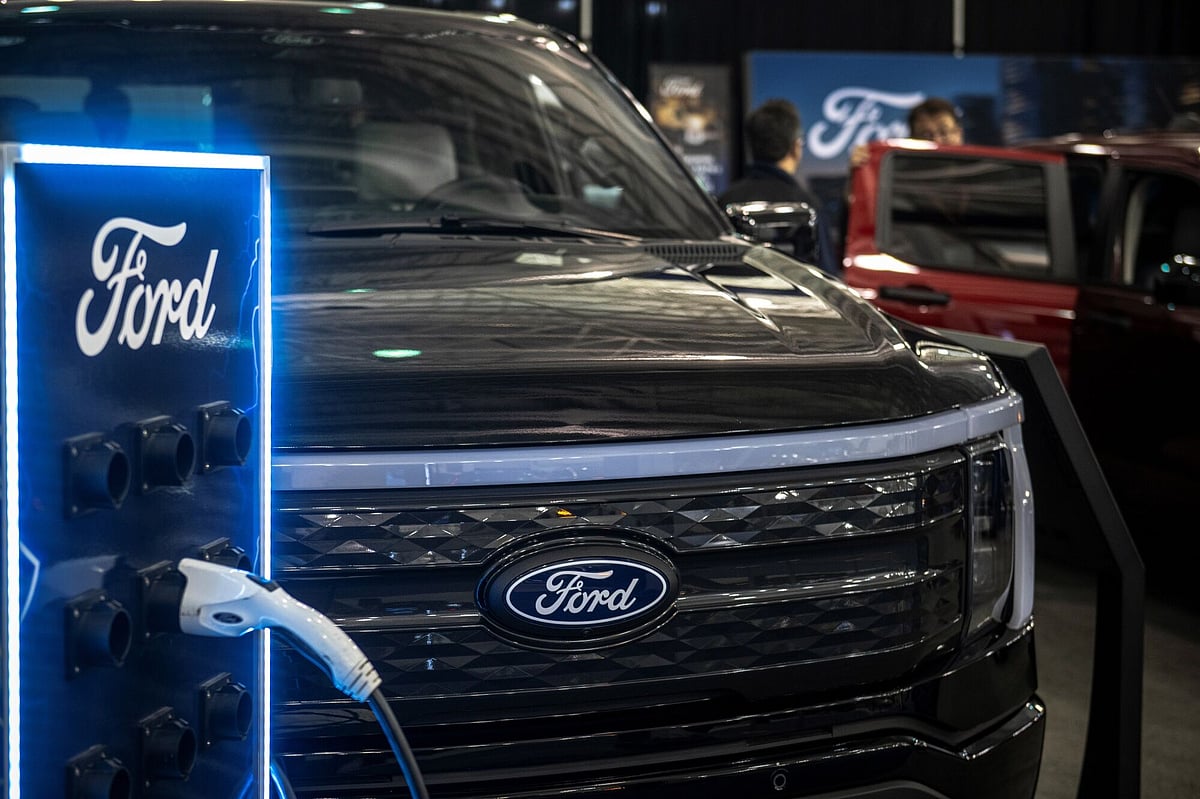Ford and its luxury brand Lincoln sold a combined total of 85,789 electrified vehicles in the third quarter of 2025, which includes both hybrids and fully electric battery-electric vehicles (BEVs), as per Carscoops.
This represents a 19.8% increase year-over-year and accounted for 15.7% of the brands’ total sales mix — up from 13.5% in the previous quarter.
Sales for Q3 is up 8.2% overall (ICE and EVs). A closer look at the figures show EVs like the Mach-E is up 50% while the F-150 Lightning sales jumped 40+ during quarter.
A significant portion of those sales was likely driven by customers rushing to take advantage of the federal EV tax credit before it expired on September 30, making investors upbeat on Ford, based on its share price movement.
Despite the nearly 20% jump in sales in Q3 sales, Ford Motor Co.’s CEO, Jim Farley, warned of a bleak outlook for electric vehicles as President Donald Trump’s policies breathe new life into gas-powered cars.
$7,500 tax credit scrapped
The elimination of a $7,500 consumer tax credit and softening of emissions rules will sharply curtail EV demand in the US, according to Farley. He predicted the share of zero-emission vehicles — currently around 10% of the US market — could fall by half.
Both Ford and General Motors appear to have found a workaround that could extend the credit’s availability for a limited time.
Here's what we know about the 'workaround' from Ford and GM, allowing both companies to keep offering the $7,500 tax credit to customers beyond the September 30, 2025 cutoff:
Didn't the federal $7,500 EV tax credit for leases just expire?
Yes, the federal subsidy officially expired on Tuesday (September 30). It had been in place for over 15 years to encourage the adoption of electric vehicles (EVs).
So how is Ford still offering it?
It's not just Ford, but also GM: Both automakers have launched new programs through their financing arms that allow them to continue offering the $7,500 tax credit indirectly — by leveraging a leasing loophole.
How does the workaround actually work?
Here's the process, step by step:
Automaker financing arms (Ford Credit or GM Financial) purchase EVs from dealership inventory by making a down payment.
That down payment qualifies the automaker's finance company for the $7,500 federal EV tax credit, as they are now the legal owners of the vehicles.
Dealers then lease those vehicles to customers using the automaker’s finance program.
The $7,500 credit is applied to reduce the lease cost for the customer—just like before.
Are customers still eligible to claim the tax credit themselves?
No. In this setup, the credit goes to the automaker’s finance arm, not the customer directly. But the benefit is passed along to the customer through a lower monthly lease payment.
How long will this workaround last?
The exact duration isn't clear, but dealers and documents suggest it could extend the lease-based tax credit savings for several more months, depending on how long the automakers keep the programs in place.
Changing EV dynamics
Farley, for his part, paints a bleak future for EVs in the US: “I wouldn’t be surprised if EV sales in the US go down to 5%,” he said Tuesday in a speech in Detroit at a conference Ford is hosting on blue-collar jobs. The EV market will be “way smaller than we thought.”
The blunt assessment underscored the rapidly changing dynamics for the auto industry under Trump, with many major manufacturers delaying EV production plans and redeploying investment dollars to internal-combustion-engine and hybrid vehicles.
Ford has emphasised consumer choice in fuel types while shifting its EV strategy to one around lower-cost vehicles.
'Partial electrification'
Farley on Tuesday said he sees more opportunity in “partial electrification,” such as gas-electric hybrids. He believes pure EVs are best suited for commuter vehicles that make “short runs” and account for only 5% to 7% of the market.
He said Ford is looking to add hybrid production to its battery and EV plants.
“We have to make these partial electric vehicles in the factories that would have been EVs,” Farley told Bloomberg. “What do we do with all these battery plants? And we will fill them, but it will be more stress” because of policy changes from the Trump administration.
Ford has four battery plants under construction, including one in Kentucky with South Korea’s SK On that started production in August.
The automaker also has two factories dedicated to building EVs, including its first all-new assembly plant in more than half a century.
Ford is trying to determine what to do with those plants now that already sluggish EV demand is expected to falter further due to Trump’s effort to end what he calls the “EV mandate.”
New types of plug-in hybrids, such as extended-range electric vehicles, need larger batteries, which could help utilise more capacity at Ford’s battery plants, three of which received a $9.2 billion loan from the US Department of Energy in 2023.
Sign up for the Daily Briefing
Get the latest news and updates straight to your inbox
Network Links
GN StoreDownload our app
© Al Nisr Publishing LLC 2025. All rights reserved.
